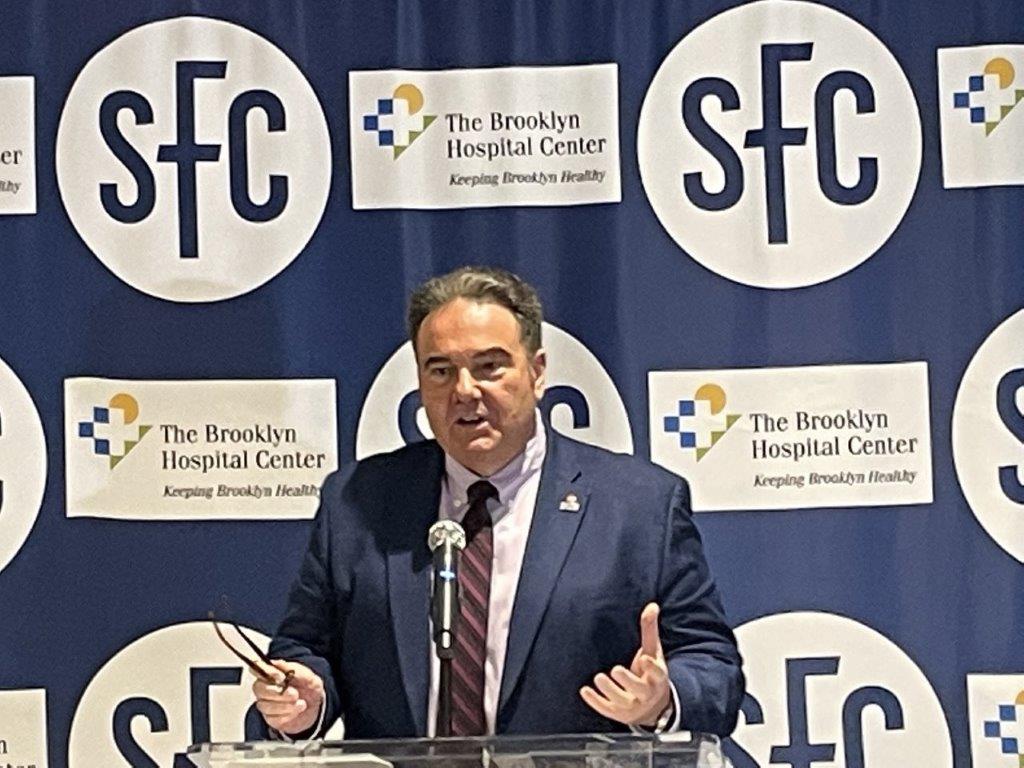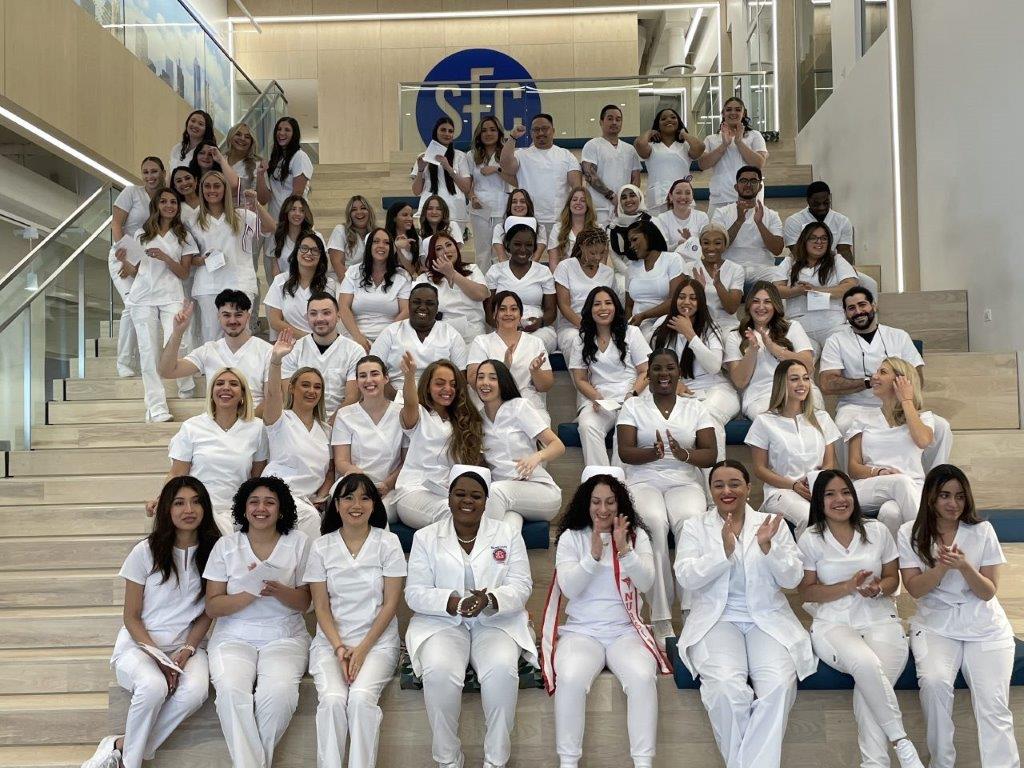SPONSORED CONTENT
by St. Francis College
Three years ago, Forbes published an opinion piece that asked, “If Colleges are Businesses, Why Not Run Them That Way?”
The Board of Trustees of St. Francis College, in Brooklyn, N.Y. embraced that challenge, and implemented a plan that has provided measurable results – surprising, perhaps, to those who thought the balance of mission and business was hindered by contradiction.
At a time when the near- and long-term viability of smaller private colleges is threatened by increasing costs, flattening revenue streams, stagnating federal and state government funding, shifting sentiment about the value of a college degree, pressure to discount tuition, and a shrinking pool of high school graduates, confronting these threats as business challenges has enabled St. Francis College to continue to support its 164-year mission of providing a first-class, financially attainable, high quality education; firmly planted in Franciscan values of community, collaboration and connection.
The pandemic and its aftermath, as it did to many small private colleges, catapulted St. Francis College into unprecedented financial turbulence. With rising interest rates, decreasing real estate values and price inflation, the College’s Administration and its Board of Trustees decided to act quickly.
Leadership in 2021 announced a transformative academic initiative, SFC Forward: A Strategic Vision for 2023 & Beyond, designed to restructure academic and programmatic offerings to align with 21st Century career needs while building on and maintaining its strong Liberal Arts foundation and expanding the population whom the College serves, locally and internationally. Simultaneously, the Board recognized that to remain competitive, it needed a modern, state-of-the-art campus. SFC put the campus it called home on 180 Remsen Street in Brooklyn Heights for almost 60 years up for sale and prepared to move to a leased, multi-story building minutes away in Downtown Brooklyn.
After a $60 million custom buildout of over a quarter million square feet that included a new chapel, an interfaith prayer room, hi-tech educational amenities, particularly those supporting the College’s acclaimed nursing program, St. Francis College moved to its new home in September 2022. The New Campus at 179 Livingston Street is even more convenient via public transit for commuter students and provides access to opportunities in NYC beyond the campus, in the heart of the cultural, financial and educational capital of the world (e.g., two stops from Wall Street). The New Campus also provides fully ADA compliant accessibility to all persons of varying abilities, usability and sustainability. The sale of the College’s former campus was finalized this past spring.
In a coordinated move, in August 2022, former Board member Tim Cecere was named Chief Operating Office of the College. As a Brooklyn native and life-long New Yorker, Tim brought a very personal and unique feeling for the College and a dedication to its mission and values.
Following a swift and thorough assessment of the entire health of the College, Cecere and the Board became convinced that more immediate – and more aggressive – action was necessary.
SFC is a majority-minority institution.
- Approximately 27% of SFC’s students identify as Black/African American.
- Approximately 25% of SFC’s students identify as Hispanic.
- Approximately 66% of SFC’s students identify as female.
- More than 50% of SFC’s students are first-generation college attendees.
- Approximately 45% of SFC’s students are Pell eligible.
- Approximately 99% of SFC’s students receive some form of financial aid, making SFC one of the most affordable private colleges in New York City.
- In 2021, the U.S. Department of Education recognized SFC as a Hispanic Serving Institution (HSI).
Toward the end of the Spring 2023 semester, Cecere and Board Chair Denis J. Salamone announced an immediate and substantial reduction-in-force of administrative support positions, and days later, the elimination of the College’s NCAA Division I athletics program. The athletic program had for years operated at an annual loss of more than 10% of the entire College operating budget. (About two thirds of the student athletes sought to transfer to play at other schools. Virtually all were snapped up quickly by SFC’s former rivals. For the student athletes continuing their studies at SFC, the College is honoring all current academic and athletic scholarships through their graduation.)
When the College’s 19th President announced his resignation in June 2023, the Board of Trustees appointed Cecere as Interim President. Board Chair Salamone noted that Cecere was the right choice at the right time, bringing decades of experience in business operations, strategic positioning, human relations, and talent development from his 32-year career with WPP, the world’s largest global advertising, media and public relations company. Cecere earned degrees in psychology and business from St. John’s University and a master’s degree in organizational psychology from Columbia University.
Cecere and the Board doubled down on embracing a balanced approach of mission and sound business practice to address the College’s challenges. The coordination of mission and business has been the topic of national debate in Higher Ed for quite some time. Striking the right balance has become foundational and essential to the survival of many small private colleges in the current climate and is expected to be for the foreseeable future. College leaders may have to find comfort with this balance and St. Francis College’s actions could serve as their model and template for success.
In addition to the reduction in force, the elimination of the College’s NCAA Division I athletic program, and capitalizing on the opportunities provided by the strategic cost cutting actions mentioned earlier, Cecere brought on business colleagues Mark Sanders and Geri Gregor, and together set into place new fiscal controls that improved cash and expense management, renegotiated vendor contracts, identified incremental revenue streams, repositioned lender arrangements and creditor terms, decreased overhead costs, increased net tuition revenue, sub-leased a portion of its new campus, and more to position the College on firmer financial and academic ground.
In addition to addressing financial matters, the College has approached academic decision-making in the same way. For example, recognizing New York State’s much-cited need for 40,000 new nurses by the end of the decade, College leaders have focused attention on growing St. Francis’ fully accredited nursing education program, investing millions of dollars to custom outfit a nursing education suite that includes state-of-the-art laboratories, an Operating Room, Examination Room, Delivery Room, Pediatric Cribs and a fully realized 10-bed Hospital Unit. Simulation-Based Learning Experiences (SBLE) and Simulated Patient Models enable students to practice and improve clinical and conversational skills in advance of actual patient encounters.
About 1 of every 5 first year SFC students have declared Nursing as their major. The program is bolstered by a recognition that college graduates who pursue health care as a career will need a comprehensive background in the field. To that end, the College has added STEM programs such as undergraduate and post-graduate degrees in Public Health, General Science and Exercise Science.
Further, SFC leadership is actively committed to the diversity of nursing candidates to ensure that graduates mirror the populations and communities they hail from and those they intend to serve. Students in the SFC Pre-Licensure Nursing program come to the College from around the tri-state area and internationally. People of color currently represent 71% of the SFC nursing program’s student body, reflecting Brooklyn’s 75% diversity index.
Other opportunities include expanding capabilities for remote and online learning in conjunction with the College’s investment in academic programs matched to sustainable and burgeoning careers, such as Accounting, Finance, IT, Biology, Criminal Justice, Psychology (Mental Health), Education, Radiology, Communications, and Management. Still, St. Francis maintains its traditional commitment to liberal arts as a foundation to a complete college education. In addition, the College is expanding its international footprint in India, China, South Korea, Germany, Italy, Ireland, Eastern Europe and the Netherlands. With a 16:1 student-to-faculty ratio, and a Franciscan commitment to honoring the spirit of every individual, SFC welcomes students from all walks of life and every religion, where they learn valuable skills, take on new experiences and bolster their confidence and competence. With over 80% of SFC’s highly regarded and well published tenured and tenure-track faculty having earned doctoral degrees, the quality of the educational experience at the College is truly world-class.
Success can be found in the numbers. Thanks to the leadership of Robert Oliva and his team, enrollment for fall 2023 has reached 3,600 undergraduate and graduate students, compared with 2,662 total students at the start of the 2022 academic year. This is a substantial increase year over year.
Far from resting on their laurels, Cecere and the Board have established a goal to increase overall student enrollment to 4,000-plus within the next two years and they believe their elegant balance of mission and business will pave the optimal path to success.
So, to answer Forbes’ question – success can indeed be found in the responsible, sophisticated, and contemporary balance of mission and business.
October is Franciscan month. In 1859, the Franciscan Brothers of Brooklyn established St. Francis College with the vision of offering a quality and attainable college education. Today, SFC is a private, independent, co-educational college with 3,600 students and 20,000 alumni. Students come primarily from the five boroughs of New York City, although their diverse backgrounds represent more than 70 countries and 40 languages.
SPONSORED CONTENT


